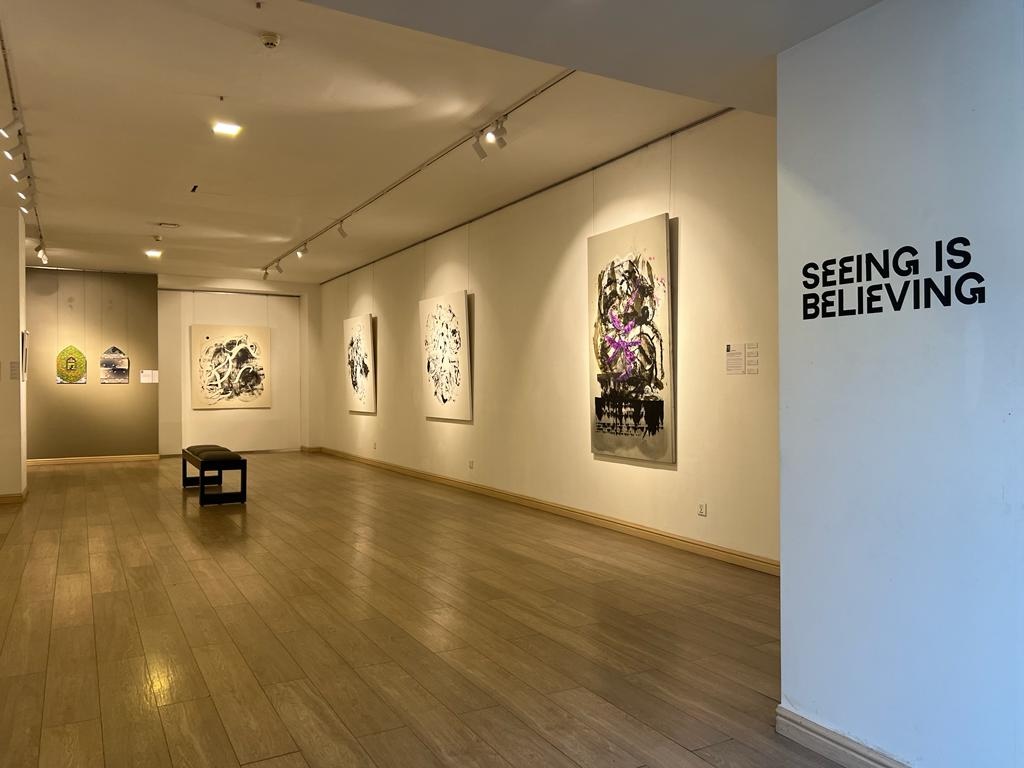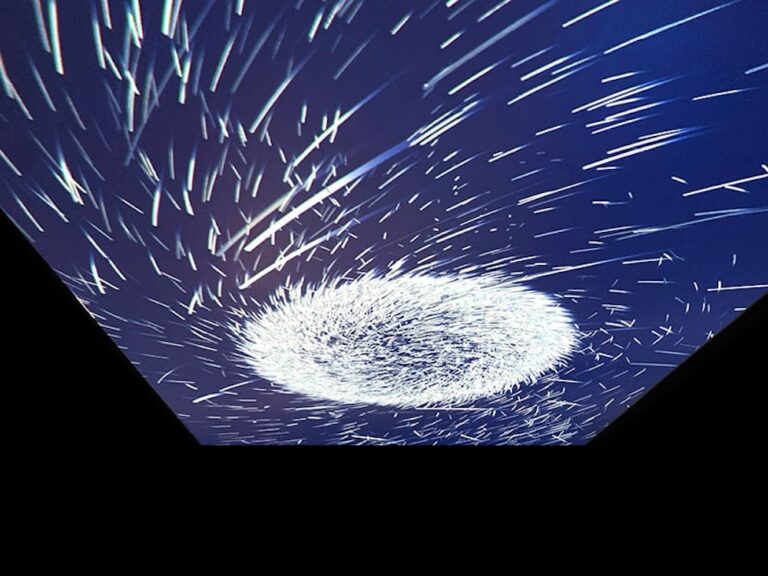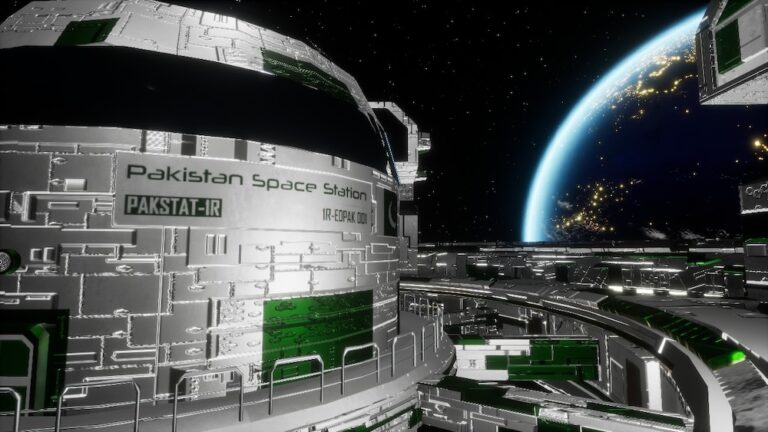
In a world filled with words, sometimes seeing is the purest form of believing. The visual tapestry that we encounter often leaves an indelible mark, a reminder that some truths are best understood through the lens of our own eyes. Let the vividness of experience be your guide, for sometimes, believing is truly in the seeing.
On 16th November 2023, Ejaz Art Gallery opened its’ doors for yet another exhibition. This time, however, the theme of the exhibition centred around the believing aspect of the artists’ lives. Out of the many episodes, all five artists – Farrukh Addnan, Imran Ahmad, Saulat Ajmal, Muhammad Atif Khan and Fatima Saeed, reflected on their new understandings either emotional, professional, social, or economical and manifested them into their works that were showcased in the ‘seeing is believing’ exhibition.
As Imran Ahmad highlighted, “the last year of existing, experiencing and exploring the world that we inhabit has made us realise many things that we tried to depict in our works”. Rightly so, through strokes, mark-making, perforation and layering of many colours in different mediums, the works displayed all seemed to co-exist and serve as a collective testimony to the contemporary realisations of the artists. Each artwork represented a chapter of their journey where beliefs were touched, and emotions were stirred resulting in new understandings to emerge.
After stepping into the gallery space, we were first greeted with a symphony of abstraction and textures by Saulat Ajmal. Each piece portrayed the introspection and nuanced stories of personal growth that captured the essence of existence in various dimensions. The shift in mediums from canvas to digital prints by Atif Khan further reinforced the idea of cultural significance and experimentation. Atif’s work paid tribute to the amalgamation of Central Asian/Persian aesthetics with a South Asian blend of storytelling by juxtaposing eclectic images in contrasting environments that subverted their original contextual meaning.
Moving on, Fatima Saeed’s work appeared to embrace loss with both words and colour. It challenged us to ponder over systemic norms that become institutionalised and do not leave us with much hope while also forcing us to question ourselves for their acceptance in the first place. Strolling to the other side, we came across Farrukh Addnan’s works that utilised pen and ink wash and oxidisation technique. The subject of his work was rooted in ancestral connections and archaeology that explored personal memories, collective historical events, and cultural depictions by conducting archival research in his ancient hometown of Tulamba.
Just as we thought we were done viewing the exhibit, we glanced on some beautiful hues and sceneries encapsulating bygone experiences and fond memories of the artist Imran Ahmad. In his work, he used drypoint on inkjet paper but the blend of his photography with drypoint formed new dialogues within his expression. By merging these two techniques, he created new forms and visuals that subtly commented on our day-to-day experiences and surroundings.

A brilliantly curated exhibition delves into globalisation and cultural exchange themes Technology, generally linked with

Ejaz Art Gallery in Lahore recently exhibited the group show ‘Unity in Flux: The Ones

Abstract art, a genre that emphasizes non-representational forms and colors, has captivated audiences and art